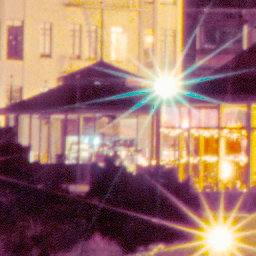Digital SLR cameras and the $1000 price theshold
In the film world, the technical quality of the pictures you take is conditioned mostly by the lens and film you use. A $79 Olympus Stylus Epic with a fixed 35mm lens will take as good or better pictures than a fancy SLR (single-lens reflex) by Canon or Nikon, and you can load it up with Fuji Neopan 1600 or Ilford Delta 3200 film for taking pictures in very low light conditions.
For digital cameras, this does not hold – the more expensive digital SLRs (DSLRs) have much larger sensors that collect more light and thus have a higher signal to noise ratio, which makes for smoother, cleaner pictures and higher sensitivity. Compact digicams peak at ISO 400, which means flash is required at night, with the accompanying “red-eyed rabbit caught in headlights” look…
Unfortunately, until recently DSLRs have been out of most peoples’ reach, with prices above $2000. Canon breached this by introducing its flagship amateur DSLR, the 10D, for under $1500 street price. Many believe that prices will still need to fall below the psychological threshold of $1000 for DSLRs to gain wide acceptance. It’s interesting to look at the Japanese camera manufacturers’ trade association CIPA’s statistics, from which it appears the manufacturers’ average wholesale price for interchangeable-lens digital SLRs was about $910 in February 2003. Some pundits think the $1000 retail price threshold will be crossed around the end of the year.
Update (2003-08-20):
The other shoe drops – Canon just announced its $900 EOS 300D, which packs most of the features (and more importantly, the sensor and image quality) of the EOS 10D for less than 2/3 the price. Canon can do this, as they are a vertically integrated company, making everything from the optics to the sensor.



